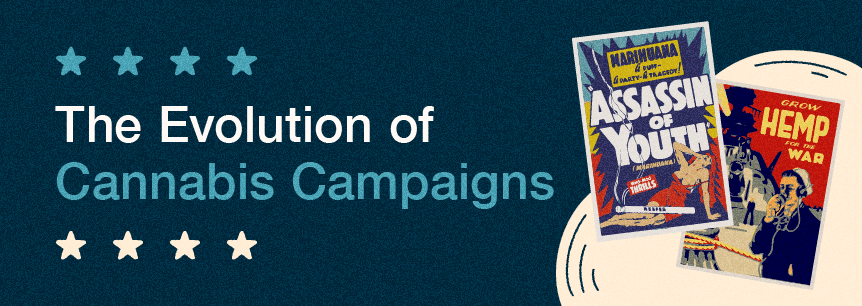“The Devils Lettuce.”
In 2019, it’s hard not to chuckle at this alternate and wildly dramatic name for marijuana, but in a pearls and penny loafer wearing era where the wholesome family watched Leave it to Beaver, anti-cannabis propaganda was widely accepted. During the 1920’s and 1930’s marijuana was largely associated with minorities. When massive unemployment during the Great Depression increased the public’s resentment towards Mexican and African-American communities, the government and conservative campaigners, used anti-cannabis propaganda as a way to capitalize on this fear.
Fearmongering became an effective tactic that lead to the social construction of cannabis as one of the most dangerous drugs of our time. It has been 83 years since the Reefer Madness era, but much like the aftershock of an earthquake, there’s damage that follows.
We’ve made some great strides in correcting the common misconceptions of generations past, but in order to alter the perception of marijuana and understand the wealth of benefits this plant offers—both medicinally and recreationally, then we need to look at what happened throughout the course of cannabis in the U.S.
There’s nothing like looking at history from a visual perspective. Most museums today hold old art and artifacts that tell more about the history of a place of than our history books. These things can almost take us back to the period or era by helping us understand how life was back then. Through this visual guide, we’ll highlight the evolution of cannabis campaigns, to get a better understanding of the complicated history that is American marijuana.
The Rise of Reefer Madness
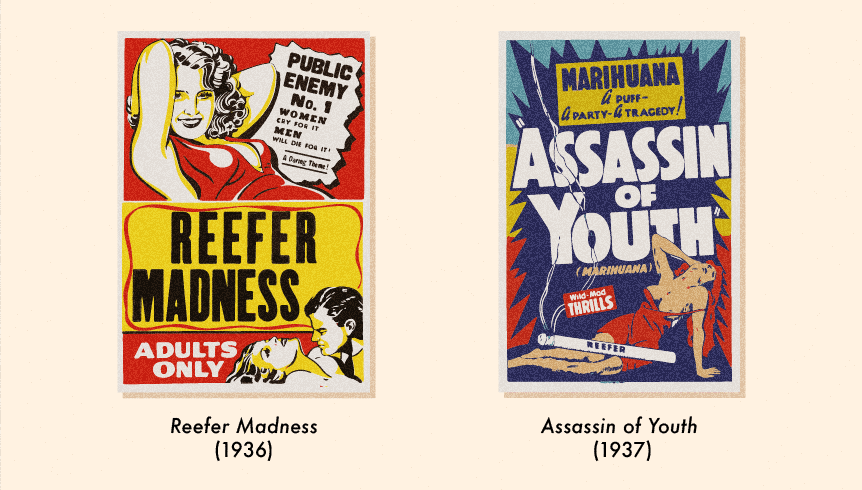
In the 1930’s, American parents were in a state of panic. The propaganda film, Reefer Madness, suggested that evil marijuana dealers lurked in public schools, waiting to entice their children into a life of crime and degenera. The film was started by Harry Anslinger, a government employee eager to make a name for himself after alcohol prohibition ended. And much to his surprise, the campaign succeeded beyond his aims and making him the head of the Bureau of Narcotics for 30 years.
In the decades prior to the 1930’s, many American households had cannabis in their medicine cabinets in tincture form. But marijuana began to decline in the eyes of “proper” society when Mexican immigrants and African-American jazz musicians openly smoked marijuana. Anslinger’s played on the racist attitudes of white American in the early 20th century and the fear of marijuana as an “assassin of youth.” His tactics included racist accusations that linked marijuana to Mexican immigrants, many of whom, had fled danger during the Mexican Revolution. His campaign also included stories of black men who enticed young white women to become sex-crazed and instantly addicted to marijuana.
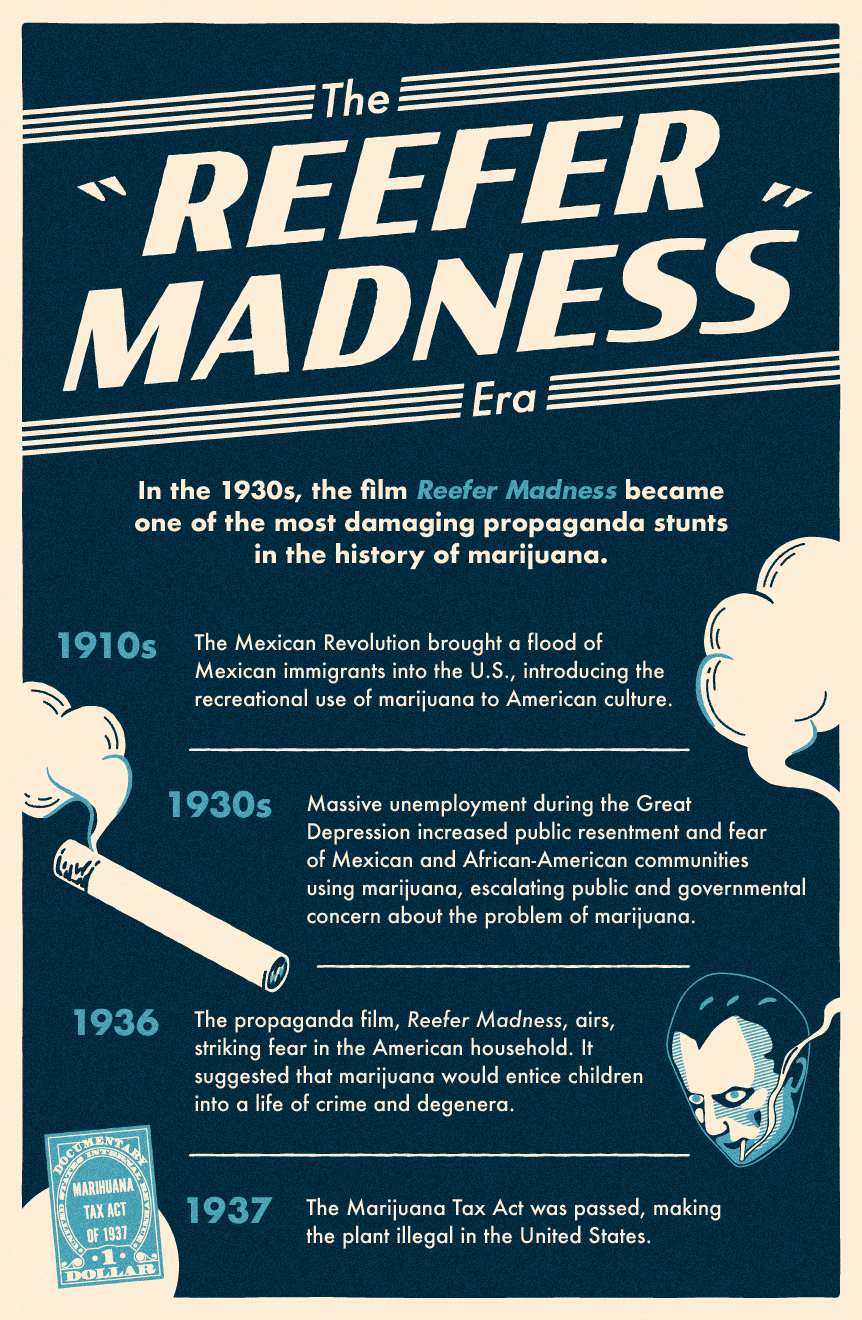
Anslinger and his Reefer Madness film was wildly successful in demonizing marijuana, creating stereotypes that we’re still trying to shake to this day.
United States of Hemp
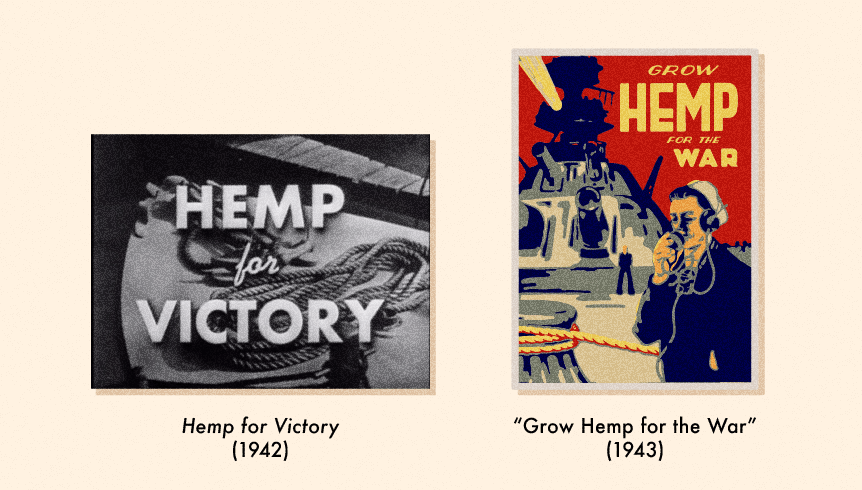
Millions of people are discovering the benefits of hemp from CBD oil to raw hemp products, but this fascination with hemp as a wonder plant is far from new. American colonists were once encouraged to grow and cultivate cannabis for hemp, but that all changed when the plant’s more “medicinal” uses were discovered. While many of us are familiar with cannabis prohibition, fewer people are aware of hemp’s rich history in the U.S. as a cash crop, or the lengths that the government went to suppress that history.
There’s no better example than Hemp For Victory, an educational film produced by the USDA in 1942 that encouraged farmers to grow hemp. During World War II, imports of hemp and other materials crucial for producing marine cordage, parachutes, and other military necessities became scarce and needed by the Allies. In response to the demand, the United States briefly reversed its stance on hemp and encouraged farmers to grow it.
After the war, hemp was once again deemed illegal and the government tried to hide all records of the campaign until pro-cannabis activists pressured them to bring it back into the light. Today you can find Hemp For Victory in the U.S. National Archives, under record number “1682.”
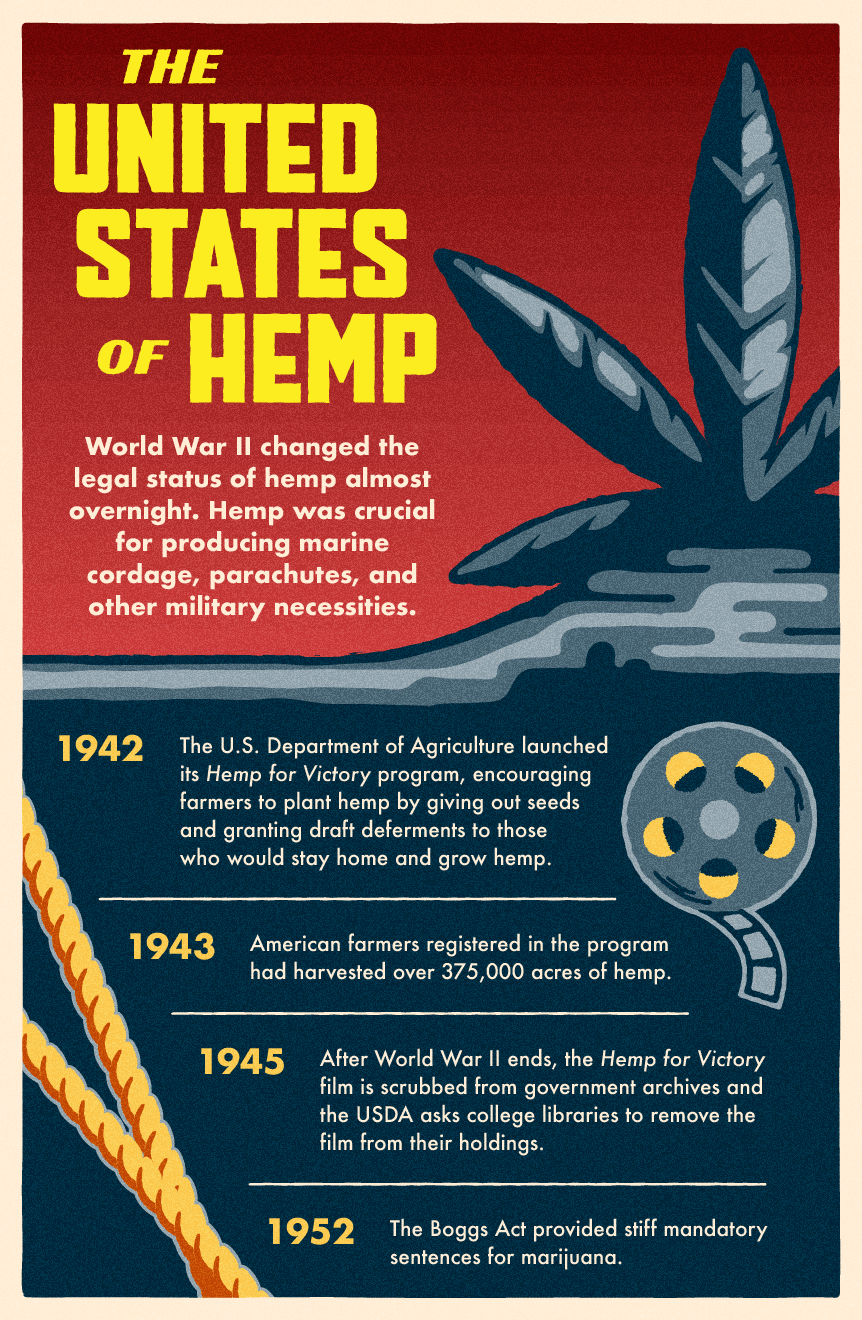
“Hemp for Victory” is important not only because it highlights the true benefits and concise history of hemp that has been largely censored from textbooks, but in less than a decade after the war on drugs began, the government had the remarkable ability to flip flop on a core drug policy overnight.
Rebranding Marijuana
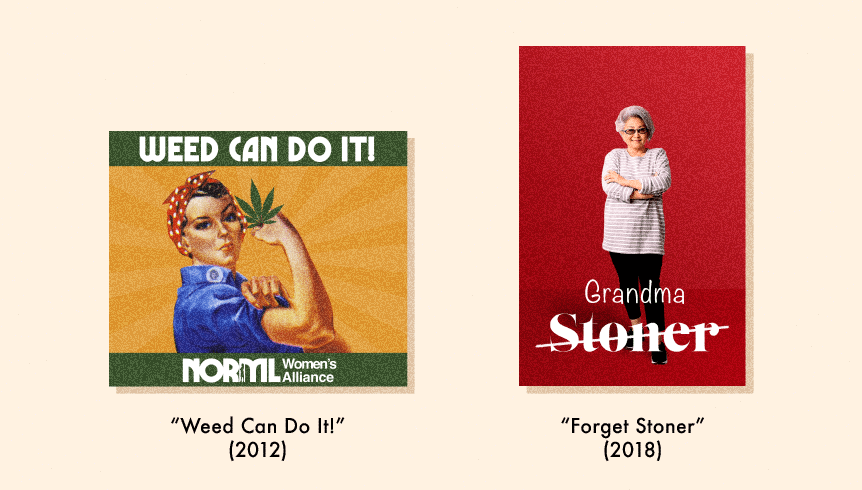
Despite marijuana’s deep roots in our country, the 1960’s and 1970’s counterculture movement, became the face of cannabis that many of us know today. Marijuana became associated with hippies, political activism and the rejection of social, economic and mainstream society. On television and in films, stoner stereotypes were those of jobless and careless characters like Cheech and Chong or “beatniks” who loathed work and authority. To many people, being a pothead became an insult, ranging from dirty hippies to lazy stoners.
Marijuana’s controversial image was followed by Richard Nixon’s “War on Drugs” in 1971, which placed cannabis, in all forms, as a schedule 1 drug, alongside ecstasy, heroin, and cocaine. Furthering Nixon’s initiative, Ronald Reagan increased federal funding for drug-control agencies and proposed strict measures, such as mandatory prison sentencing, for drug crimes.
Over two decades as America’s public enemy number one, and marijuana was in desperate need of a new image, which is exactly what it would get in 1996 when California voters legalized marijuana for recreational use. Medical marijuana not only helped change the way we view cannabis but opened the doors to recreational legalization.
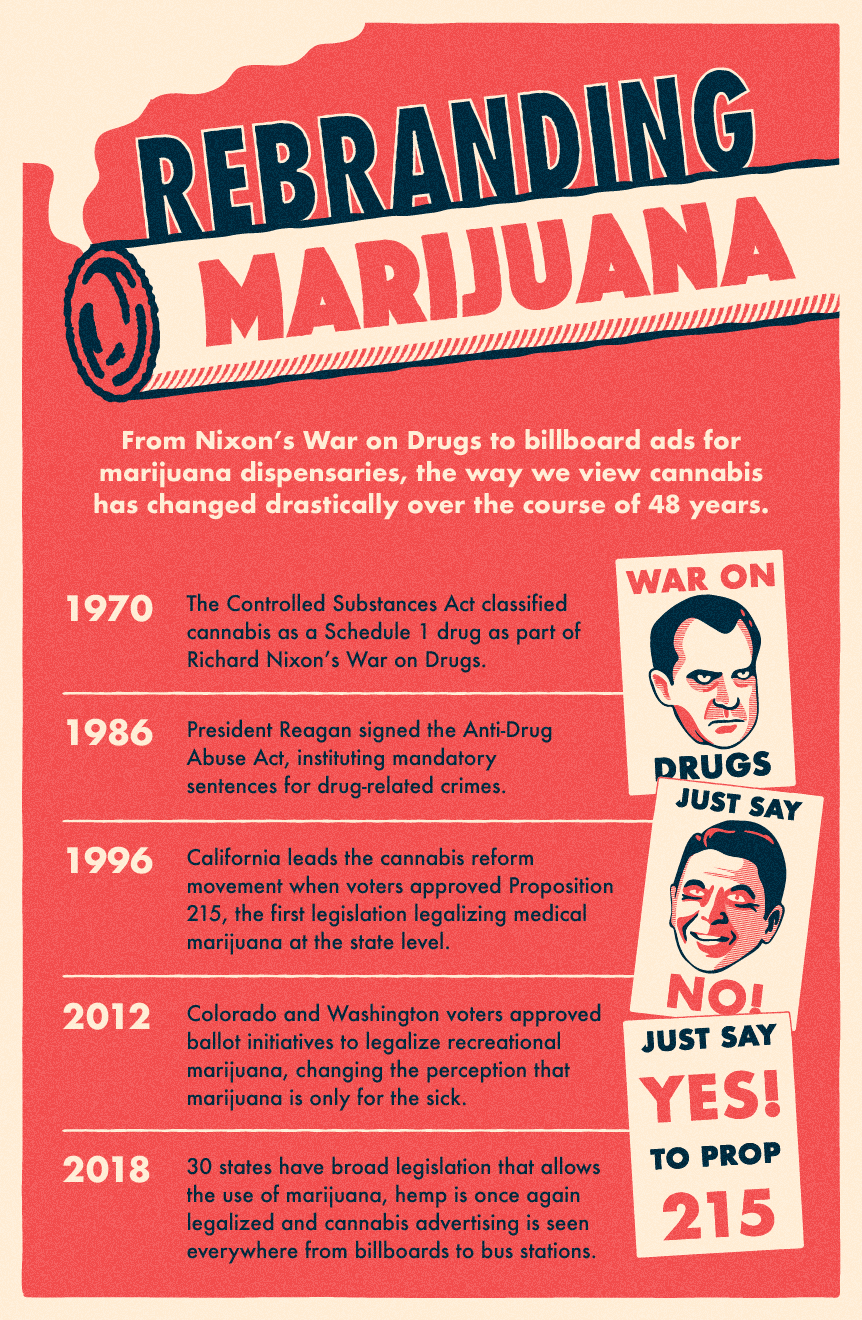
Fast forward decades later and the way we view cannabis, in an era of legalization, is a shocking black and white comparison to generations past. Today there are millions of adults who choose to enjoy cannabis both recreationally, and medicinally. Some use it socially with friends, and others to unwind after a stressful day at work or just to think more creatively. Consumers come in all forms: entrepreneurs, business executives, artists, tradespeople, grandparents, millennials, and more. But with the traditional stigma around pot, many of these folks are largely under-represented in current cannabis culture.
Modern marijuana campaigns aim to change that, starting with busting the 1970s-era, Cheech-and-Chong stereotypes of cannabis users. With regulations around cannabis advertising, determined individually by states, brands have to be extra creative with their marketing efforts, and they’re doing so with flair. Nowadays, we’re seeing everything from anti-stoner campaigns to sleek, modern packaging and billboards that promote small batch, local brands — as if cannabis was a craft beer.
There’s no denying the rich history of cannabis in the United States — going back to the Reefer Madness era. But by evaluating cannabis campaigns of the past, we can better understand how to reshape those of the future. The way we view marijuana is not only maturing, but celebrating the diversity of its consumers.

